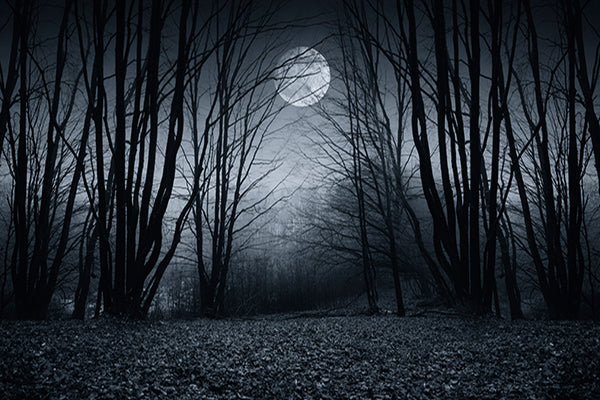Happy Halloween – Or Is It?
On November 7 at 9:36 AM-PDT, the Sun hits exactly 15 degrees of Scorpio. That might not sound exactly earth-shaking, but if you were a Druid, it would be a really big deal. Actually, you might still be in bed recovering from the previous evening’s festivities – more about that point in a little while.
Most traditional cultures were very aware of the Summer and Winter Solstices. The noon-day Sun would have reached its highest or lowest point in the sky. The days would start getting longer or shorter. All that is fairly obvious even to a casual observer, so our ancestors figured it out long ago in prehistory. I suspect that knowledge of the Equinoxes came a little bit later – again, no one knows the date because it all happened such a long time ago, but noticing that night and day were of equal length and that the Sun now rose or set due east or due west seems slightly less self-evident than the “return of the light.”
Anyway, those four points – the two Solstices and the two Equinoxes – became the skeleton of the yearly calendar in every culture, not to mention the basis of the western Zodiac. They divided the year into four quarters – what we came to call the four seasons. Pretty much universally around the world, those four transition points were marked by festivals. Whether that was to please the gods and goddesses, or just because people like parties, is hard to say.
But people do like parties! So why not add another four? Why not celebrate the time when we reach the midpoint of each season? That struck many cultures as an excellent idea as well, and so another set of holidays was born. One name for these four new holidays was the cross-quarter days. They are celebrated when we are halfway across each of the “quarters” created by the Solstices and Equinoxes.
(By the way, for anyone in the audience who lives in the southern hemisphere, please indulge my northern hemisphere over-simplifications for another moment or two. We’ll get to you soon.)
Astronomically, the (northern) Autumnal Equinox occurs when the Sun hits 0 degrees of Libra. The next stop is the Winter Solstice when the Sun arrives at 0 degrees of Capricorn. The midpoint of those two points is 15 degrees of Scorpio – hence our dancing Druids on or about November 7. Those old wizards had arrived at a cross-quarter day and they were ready to feast, chant, and honor the gods and goddesses.
Two complications immediately arise:
First, let me quickly get to some of that promised attention for our Australian friends – naturally, what’s the beginning of summer in the northern hemisphere is the beginning of winter in the southern one. The basic structure of everything we’ve been talking about remains exactly the same, cross-quarter days and all. The seasonal names just reverse – winter becomes summer and spring becomes fall, that’s all.
The second complication is more of a mess, and it brings us closer to my deeper reasons for
writing this essay. There can be no argument about whether 15 Scorpio is halfway between 0 Libra and 0 Capricorn – when the Sun arrives at that degree, it is “crossing the quarter,” end of story. Our ancestors in many cultures no doubt understood that concept very well.
But then the Roman calendar got pasted over reality.
Cultural Christianity got in the act too. The early church was eager to eradicate any traces of “paganism” and “sky worship,” so they supported the Roman calendar. Why is January 1 the first day of the year? There’s no sky-lore there at all. “New Year’s Day” sounds innocent enough, but the soul-sucking reality of it is that when the world adopted that version of the calendar, we cut ourselves off from the heavens. Because of that sundering, November 7 is just another day on the calendar for most of us. Unless it’s your birthday, who’s going to think it’s special in any way? People don’t think of cross-quarter days anymore.
But wait a minute – just about a week earlier, many of us will be dressing up in scary or disconcerting costumes and celebrating Hallowe’en.
Let’s put a few Druids in a time-machine and bring them forward to modern Hallowe’en. Once the culture shock wore off, they would see many parallels with their own celebrations. For them Samhain, as this mid-Scorpio cross-quarter day was called, marked the beginning of the final season of the year. It was November; the world was descending into darkness and cold. Creatures and plants were dying, and of course many people would die too, given the conditions they were about to face. Samhain honored death. It honored the dead – and it included the understanding that the dead live on among us in other forms. In modern Mexico, this same festival is still celebrated even more vividly as El Dia De Los Muertos – the Day of the Dead. On it, we might offer a meal to a beloved ancestor who had passed away, conversing with them graveside as if they were still here – and affirming that, in some very real sense, they are still here, just invisible.
By the way, the pronunciation of Samhain is a bit of a hornet’s nest on Google, with Irish, Welsh, and Scottish variants. I’m saying it as Sow-In, which is allegedly pretty close to the Gaelic way of saying it. Just don’t be a dork and say Sam Hane, like it’s spelled.
Think of kids on Hallowe’en dressed up as devils, angels, fairies, and so forth. Think of plastic skeletons hanging from the ceiling and the Grim Reaper staring at everyone. All that is pure Samhain. Just think of someone sneaking up behind you and saying, “Boo!” And you immediately laugh and forgive them because it’s Hallowe’en.
A moment ago I griped about the Roman calendar blurring our attunement to the heavenly cycles. Blurring is the right word – they didn’t actually succeed in erasing all the connections. Hallowe’en is “close to” our November 7 cross-quarter day. Christmas happens just three or four days after the Winter Solstice. Valentine’s Day – often mocked as a commercial invention – is actually only a week or after the 15 Aquarius cross-quarter day that our European ancestors knew as Imbolc and which is sometimes celebrated as Candlemass by Roman Catholics. Our May Day is close to the famously sexy Celtic holiday of Beltane.
Today a lot of modern pagans celebrate these cross-quarter days on the first day of the month. I think that’s a mistake. The real energy happens a few days later. Blessed be, one and all – but I wish they would ask an astrologer when to honor those days! Finding the true cross-quarter day is easy. The formula is straightforward: the true cross quarter day always happens when the Sun reaches the midpoint of any one of the Fixed signs – Taurus, Leo, Scorpio, or Aquarius. And, by the way, our upcoming November 7 holiday is accurate this year, but it might vary slightly from year to year. You’ve probably noticed how the Summer Solstice usually falls on June 21, but it can be the day before or the day after, depending on time zones and the basic wobble of the calendar that comes from Leap Years. It’s the same with the cross-quarter days.
Ever wonder why the Summer Solstice is sometimes called “Midsummer’s Day?” It’s not the middle of summer – it’s the first day of summer, right?
Fair enough, but that’s not how the Celtic people saw it. Here’s a little known fact: to them, the Solstices and Equinoxes represented the middle of each season, not the beginning. To them, “summer” began with Beltane and lasted until Lammas, when the Sun hit 15 degrees of Leo in early August. By their standards, when we come to our cross-quarter day on November 7, that will mark the beginning of winter, and if you think about it for a moment, that actually makes a kind of sense. The days are getting shorter and colder. By Candlemass in early February, you’re starting to have some hope again – Spring is just around the corner, so to them, that’s when Spring began.
One more little bit of ancient lore that lives on today, albeit under a heavy disguise. To the Celts, days began at sunset, not at midnight as we think about it today. That’s why we still see the fingerprints of that idea on New Year’s Eve and Christmas Eve – not to mention All Hallow’s Eve coming right up in the form of Hallowe’en.
And by the way, I’ve been using the traditional spelling of that holiday, putting the apostrophe between the two “e’s” in order to emphasize how the word “evening” is buried in the term.
So far, I’ve been unabashed about using Celtic and northern European perspectives. If you’d like to go deeper into any of this from that cultural perspective, have a look at The Book of the Moon. But these traditions are not just part of Caucasian culture. For example, on September 27th, right after the Equinox, I got a note from a Chinese friend that she would be delayed in getting me some information because she was “currently in the Shanghai Hongqiao train station on my way back to my hometown for the Mid-Autumn Festival.”
Mid-Autumn? In late September? Here the Chinese people are thinking like Celts, with the Fall Equinox seen as the middle of Autumn, not the beginning. It makes me wonder just how far back these traditions go. Google tells me that Asians and Europeans separated into two races 41,000 years ago. Is this way of thinking about the four seasons that old? Does it go back to a time when there was no separation between Asians and Caucasians?
Meanwhile, the world-famous Chinese New Year starts on the second New Moon after the Winter Solstice. If that sounds unnecessarily complicated, try this – in the Christian tradition, Easter is the first Sunday after the first Full Moon after the Vernal Equinox. East and west, here we see our ancestors adding the Moon to the mix along with the seasons, and thus honoring both sides of the heavens.
So, boo! And happy Hallowe’en! I hope you’ve enjoyed this little romp through some ancient astrological lore. And if you’ll indulge me for one more moment in my bully pulpit, if you have any pagan friends who want to celebrate Samhain on November 1 instead of properly on the 7th, please invite them back to the path of righteousness! Whether it’s today, or 41,000 years ago, it’s our task as astrologers to help keep our communities in sync with the heavens. That never changes
Thank you.
Listen to the podcast version ...




